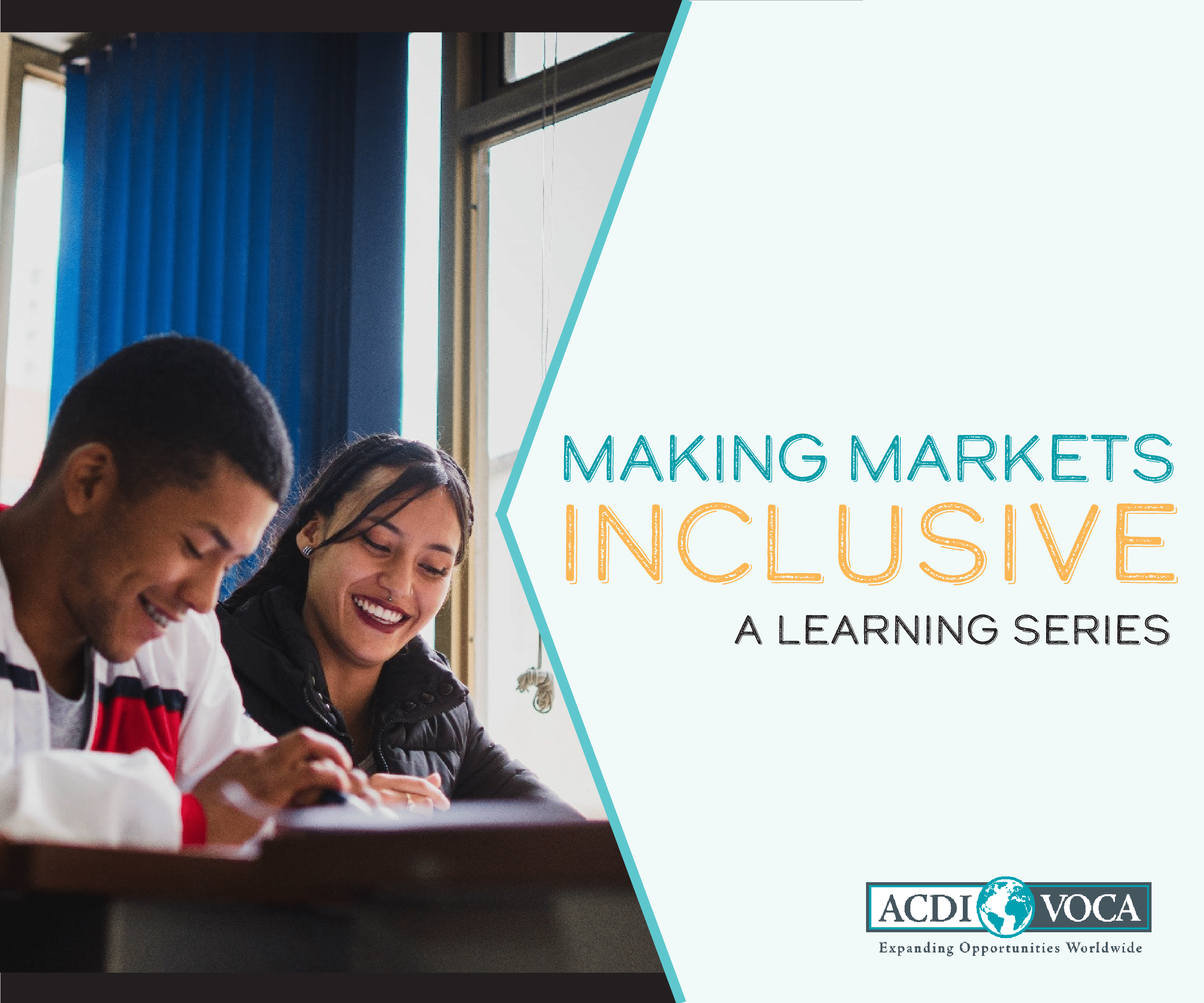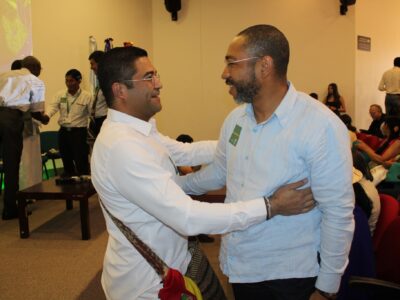
Many agricultural market systems development (MSD) programs have been turning their attention toward the inclusion of women, youth, and other marginalized groups as critical to not only achieving development impacts for these groups but also generating more competitive, inclusive, and resilient market systems. While robust evidence around “what works” is still limited, many agricultural MSD programs are designing, implementing, adapting, and learning from approaches aimed to bring about more effective inclusion of women and youth. In a multi-part blog series, we will explore these themes as they relate to ACDI/VOCA’s own work, sharing practical experience, challenges, and successes to further learning.
As we continue our Making Markets Inclusive Series, this fourth blog continues the conversation from Part 1 and offers guidance to practitioners on how to advance inclusion outcomes during co-creation with the private sector. In Part 2, we dive deeper into this guidance, focusing on inclusion in phases three through five: partnership formation, formalizing an award, and reflection.

Phase 3: Co-Creation for Partnership Formation
As we move from selection and preparation to partnership negotiations and formation, we enter the core phase of the co-creation process. First, it is important to establish a shared understanding of achieving inclusion outcomes as well as additionality with partners. This will ensure that market actors are coming up with innovative new solutions to market constraints that are inclusive and sustainable, rather than requesting funds for “business as usual” ideas. If partners are new or hesitant about gender and social inclusion (GSI) integration, consider starting small and piloting different approaches or activities or using outcomes from previous partnerships to demonstrate the potential for investment in GSI outcomes. Once there is positive proof, as part of the reflection phase, projects and partners can decide whether to adjust targets.
For example, the Feed the Future Bangladesh Rice and Diversified Crops (RDC) Activity, funded by USAID and implemented by ACDI/VOCA, uses the Tool for Assessing Motivations of Private Sector Partners to Work with Women as Suppliers, Employees, and Consumers. This tool allows the team to evaluate the commercial incentive, feasibility, scale, and sustainability of integrating women or gender inclusion into business proposals.
Phase 4: Formalizing an Award or Agreement
Once you have decided on specific partnership activities, there are different ways that you can formalize those plans. Use it as an opportunity to clearly describe intentions, ways of working, and desired outcomes. Regardless of the mechanism used, it is critically important that staff shift from a focus on transactional functions, such as the typical grant management process, to a more facilitative and transformational mindset. The goal is to collaboratively engage the partner in activities that will result in shared value and achievement of inclusion outcomes.
The Market Actor Partnership Agreement Gender Review Checklist, developed by the RDC Activity, allows programs to review gender constraints and proposed activities through a partnership. The tool assesses whether GSI considerations have been integrated within partnership design and offers an opportunity for staff to go back and support the partner to think about GSI considerations within their business model.
Phase 5: Reflection
Pause and reflection are critical during and after subsequent co-creation processes. It offers both the program and the partner to reflect on what worked, what didn’t, and why. It is also an opportunity to explore how to get to alignment and additionality more quickly to advance inclusion outcomes as well as to determine existing GSI challenges or lessons learned.
The Agriculture and Food Systems Development Activity (AFDA) in Myanmar, funded by USAID and implemented by ACDI/VOCA, conducted a pause and reflect session using a participatory stakeholder exercise. Through this exercise, it was determined that many partners were still passive regarding the economic and social importance of integrating gender and youth into their business models through co-creation. Using this information, AFDA adapted its approach to make the economic value of investment in GSI outcomes clearer. AFDA came prepared with secondary market research and used previous partners successes in investing in inclusion as “proof points.”
ACDI/VOCA also recently developed a partnership health tool that integrates GSI considerations to assess the resources, behaviors, and relationship health factors that contribute to partnership success during co-creation and implementation. For example, by looking at responsiveness, senior leadership engagement, staff transition readiness, and alignment, we have already been able to modify co-creation processes and maximize inclusion outcomes that lead to more competitive, inclusive, and resilient markets.
How have your projects used co-creation to advance inclusion outcomes? What challenges have you faced in advancing inclusion outcomes in your own MSD programs through engaging the private sector? Follow along as we explore these topics (and many more!) over the coming months in this multi-part blog series. Our next blog will explore making the inclusive business case to advance GSI outcomes.
For More In The Making Markets Inclusive Series
Read the first post in the series, “How Market Systems Development Programs Can Boost the Inclusion of Women, Youth, and Other Marginalized Groups,” published March 2, 2021.
Read the second post in the series, “Designing for Inclusion,” published March 29, 2021.
Read the third post in the series, “Tips for Advancing Inclusion Through Co-Creation With the Private Sector, Part 1,” published May 4, 2021.
Comments









